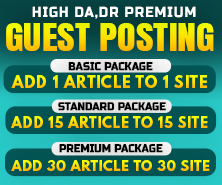Software demos are a vital component in the sales and onboarding process, offering potential users a clear, hands-on understanding of how a software solution functions and how it can meet their specific Software Demos needs. Unlike traditional brochures or sales pitches, a software demo goes beyond theoretical descriptions by visually and interactively walking users through the platform’s features, benefits, and user interface. These demos are especially important for complex or enterprise-level software where decision-makers need to assess usability, compatibility, and real-world functionality before making a commitment. A good software demo bridges the gap between interest and adoption—it shows the product in action, highlights its unique selling points, and demonstrates how it solves a user’s problem or improves a workflow. For SaaS companies, software demos often serve as a critical turning point in the buyer’s journey, typically coming after an initial discovery phase and before the final decision. Whether conducted live by a sales representative or offered as a self-guided interactive demo on a website, the goal remains the same: to provide clarity, build confidence, and help users visualize the product in their daily operations. Live demos allow for two-way communication where presenters can tailor the walkthrough based on audience questions or industry-specific use cases, making the session more relevant and engaging. On the other hand, on-demand demos or recorded walkthroughs offer scalability and convenience, letting prospects explore at their own pace. Many modern platforms like Walnut, Reprise, and DemoStack offer no-code tools that allow sales and marketing teams to create personalized, clickable demos without needing engineering support. These tools help simulate a live environment without the risk of bugs or system limitations that might exist in a live setup. A well-crafted software demo also builds trust—it shows transparency, reveals actual workflows, and helps potential customers assess whether the software integrates with their current tools or processes. Moreover, demos are not just sales tools; they’re also essential in post-sale stages, such as customer onboarding, support, and training. By using demos during these phases, companies can reduce churn, improve product adoption, and ensure long-term customer satisfaction. The success of a software demo often depends on how well it aligns with the user’s pain points and business goals. It should focus less on listing every feature and more on solving real problems. Storytelling, simplicity, and a clear value narrative are key elements that keep users engaged and increase the chances of a positive outcome. In an increasingly competitive software market, offering high-quality, tailored demos can significantly enhance conversion rates and overall customer experience. As software buyers become more informed and selective, they expect more than just claims—they want proof. A software demo is that proof. It turns curiosity into conviction, providing a clear picture of what using the product will be like and why it’s the right choice. Ultimately, software demos are not just a sales tactic—they’re a strategic tool for building trust, demonstrating value, and accelerating business growth.




